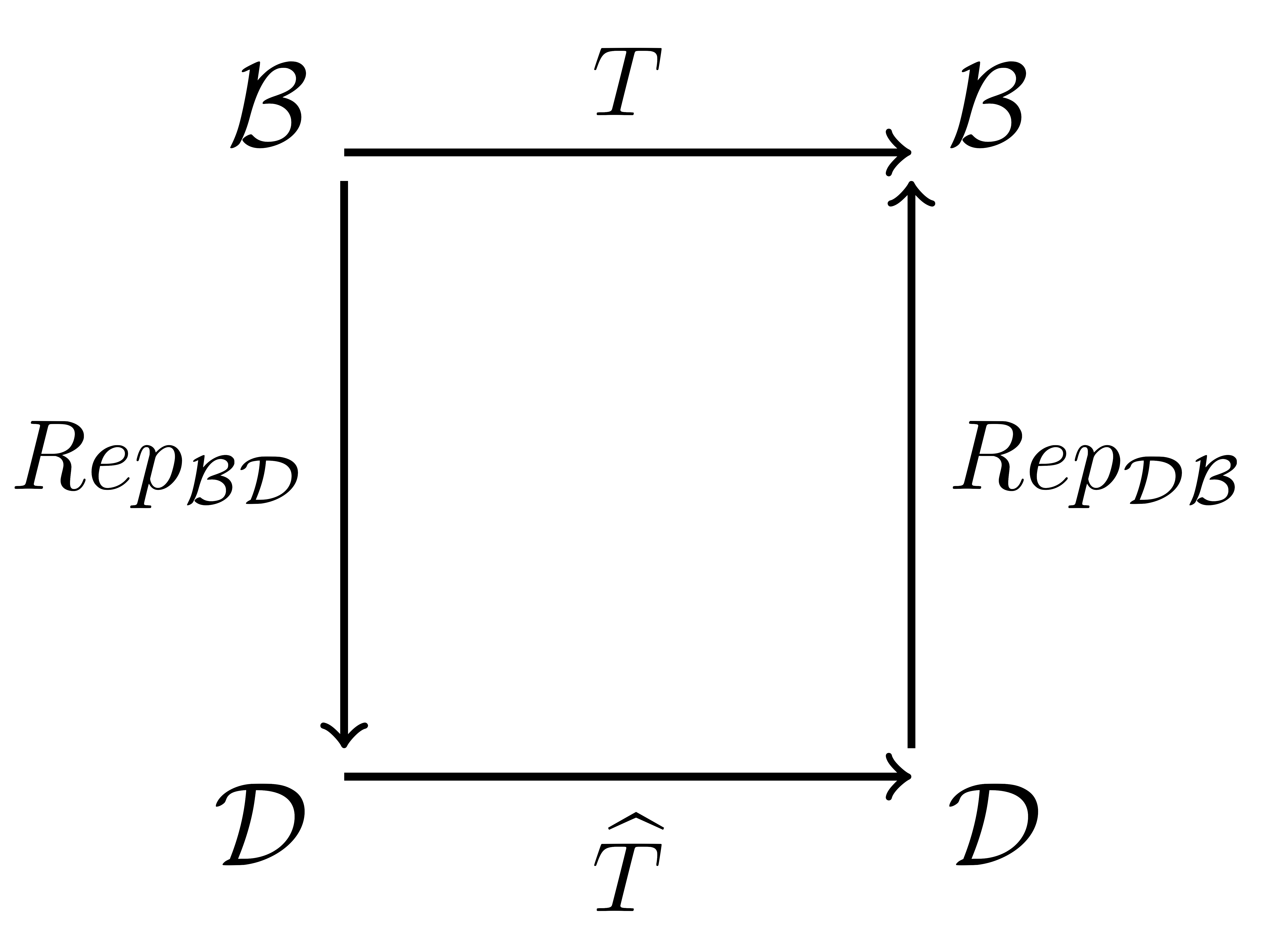Section 4.2 Matrix Equivalence and Similarity
¶Subsection 4.2.1 Change of Bases and Transformations
Recall that if \(\mathcal{B}\) is one basis for a vector space and \(\mathcal{D}\) is another, then the transformations \(Rep_{\mathcal{B}\mathcal{D}}\) and \(Rep_{\mathcal{D}\mathcal{B}}\) change coordinates back and forth between them, and that \((Rep_{\mathcal{D}\mathcal{B}})^{-1}=Rep_{\mathcal{B}\mathcal{D}}\text{.}\) (See also Figure 3.4.5 and Figure 3.4.6.)
If \(T\) is a transformation of the vector space in terms of the basis \(\mathcal{B}\text{,}\) then
is the same transformation except in terms of \(\mathcal{D}\text{.}\) 1 Why is the composition of the transformations written right to left? When this situation exists we say that the transformations \(T\) and \(\widehat{T}\) are similar (or in some settings we say they are conjugate).

and
Subsection 4.2.2 Similar Matrices
Definition 4.2.2. Similar Matrices.
Two matrices \(A\) and \(B\) are said to be similar if there exists an invertible (non-singular) matrix \(P\) such that
More generally, we say that two elements related in this way are conjugates.
Investigation 4.2.1. A Basic Example.
Suppose we have two matrices
and we want to see if they are similar. By definition this means we need to find \(P\) such that
or equivalently
Let
so that the equation above becomes
leaving us with four equations and four unknowns. Here we write it as a homogeneous system:
or as a matrix equation
With a little work this reduces to
So if we let \(p_3=-1\) and \(p_4=1\) we get \(p_1=5\) and \(p_2=-4\text{,}\) and
Note that since \(p_3\) and \(p_4\) are free variables there are in fact infinitely many solutions. Finally, we will see in Subsection 4.3.1 that there is an easier way.
Here are some basic key observations:
Theorem 4.2.3. Basic Properties of Similar Matrices.
If the matrices \(A\) and \(B\) are similar, then
- \(\exists\ P:\ A=P\, B\, P^{-1}\)
- \(\exists\ P:\ A^n=P\, B^n\, P^{-1}\)
- \(det(A)=det(B)\)
- \(A\) is invertible if and only if \(B\) is also invertible
- \(A=I\) if and only if \(B=I\)
- \(A=0\) if and only if \(B=0\)